The Learning Company (TLC) was an educational software company founded in 1980 in Palo Alto, California and headquartered in Fremont, California. The company produced a grade-based line of learning software, edutainment games, and productivity tools. Its titles included the flagship series Reader Rabbit, for preschoolers through second graders, and The ClueFinders, for more advanced students. The company was also known for publishing licensed educational titles featuring characters such as Arthur, Scooby-Doo, Zoboomafoo, and Caillou.

Broderbund Software, Inc. was an American maker of video games, educational software, and productivity tools. Broderbund is best known for the 8-bit video game hits Choplifter, Lode Runner, Karateka, and Prince of Persia, as well as The Print Shop—originally for printing signs and banners on dot matrix printers—and the Myst and Carmen Sandiego games. The company was founded in Eugene, Oregon, and moved to San Rafael, California, then later to Novato, California. Brøderbund was purchased by SoftKey in 1998.
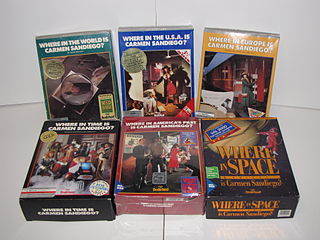
Carmen Sandiego is a series of American educational mystery video games that spawned an edutainment franchise of the same name. The game released in 1985, Where in the World Is Carmen Sandiego?, started off both the video game series and the franchise as a whole, which has continued up to the present day. Each game of the series has a particular theme and subject, where the player must use their knowledge to find Carmen Sandiego or any of her innumerable henchmen. This series was originally owned by Broderbund, but is now owned by Houghton Mifflin Harcourt. Since its initial release the series has won over 125 awards and accolades.

David Mark Rubenstein is an American lawyer, businessman, philanthropist and sports team owner. A former government official, he is a co-founder and co-chairman of the private equity firm The Carlyle Group, a global private equity investment company based in Washington, D.C. Additionally, he is the owner of the Baltimore Orioles.

Carmen Sandiego is a media franchise based on a series of computer video games created by the American software company Broderbund. While the original 1985 Where in the World Is Carmen Sandiego? video game was classified as a "mystery exploration" series by creators and the media, the series would later be deemed edutainment when the games became unexpectedly popular in classrooms. The franchise centers around the fictional thieving villain of the same name, who is the ringleader of the criminal organization V.I.L.E.; the protagonists are agents of the ACME Detective Agency who try to thwart the crooks' plans to steal treasures from around the world, while the later ultimate goal is to capture Carmen Sandiego herself.
Lauren Elliott is an American video game designer, internet entrepreneur, publisher and inventor. He is recognized as one of the pioneers in the edutainment video game industry.
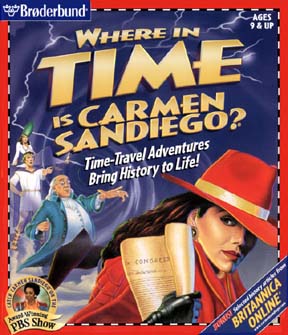
Carmen Sandiego's Great Chase Through Time is a 1997 edutainment point-and-click adventure game developed by Broderbund for Microsoft Windows and Macintosh devices. The game is a remake of the 1989 time-travel title Where in Time Is Carmen Sandiego?, making it the second Time video game in the Carmen Sandiego franchise. The game was strongly influenced by the short-lived PBS game show, Where in Time Is Carmen Sandiego?. The game was previewed at the 1997 Toy Fair in New York City. A demo version was included on the CD for Carmen Sandiego Word Detective and was available on the Carmen Sandiego website. After Broderbund was sold to The Learning Company, the game was re-released with the new title - Carmen Sandiego's Great Chase Through Time - but with minimal redesign.
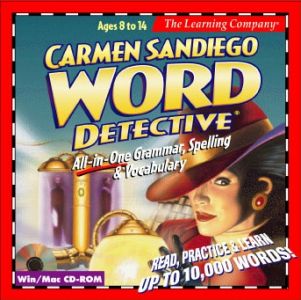
Carmen Sandiego Word Detective is a game in the Carmen Sandiego franchise which was released in 1997. The plot of the game sees Carmen Sandiego inventing a machine called the Babble-On Machine, and the player in the role of Agent 13, thwarting her plans by freeing all the other agents which have been captured by Carmen. The title is very similar in format to Carmen Sandiego Math Detective, which was released a year later.

Where in the World Is Carmen Sandiego? is a 1996 video game part of the Carmen Sandiego franchise. It was the third version of the game, after the 1985 original title of the same name and a 1992 Deluxe version of said game. The game's release coincided on the heels of the end of the PBS game show, and features QuickTime videos of Lynne Thigpen reprising her role as "The Chief". This was the last version of the game to follow the "classic" formula of the series, but much of the game, especially the "warrant" portion, was heavily redesigned. The Deluxe Edition released in 1998 added speech welcoming the player to each country and an "ACME Global Language Link-Up" satellite which quizzed the user on the local language. Players also received a spy watch and "an introduction to 12 foreign languages".

Carmen Sandiego: Junior Detective is a 1995 education game in the Carmen Sandiego franchise developed by Broderbund. Although not a version of Where in the World Is Carmen Sandiego? by name, it is essentially a simplified version of it for pre-readers. Allgame says the game "is geared for younger users, with only 14 cases to solve". The lead characters of the FOX animated series Where on Earth Is Carmen Sandiego?, Zack and Ivy, were included in the game, along with Stretch - "ACME's crime-tracking dog".
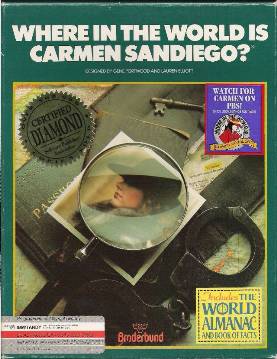
Where in the World Is Carmen Sandiego? is an educational video game released by Broderbund on April 23, 1985. It is the first product in the Carmen Sandiego franchise. The game was distributed with The World Almanac and Book of Facts, published by Pharos Books. An enhanced version of the game was released in 1989, which did not have the almanac-based copy protection and instead used disk-based copy protection. A deluxe version was released in 1990, and featured additional animation and a reworked interface from the original version. Some of the bonus features included digitized photos from National Geographic, over 3200 clues, music from the Smithsonian/Folkways Recordings, 20 villains, 60 countries, and 16 maps. CD-ROM versions for DOS and Macintosh were released in 1992, and a Windows version was released in 1994.

Where in the U.S.A. Is Carmen Sandiego? is a video game that was released by Broderbund in 1986 and is part of the Carmen Sandiego series. The game is a sequel to 1985's Where in the World Is Carmen Sandiego?. A deluxe version with updated graphics and interface was released in 1992 and a remade version was released in 1996. The goal of the game is to track Carmen Sandiego's henchmen across the United States, arrest them, and ultimately arrest Carmen herself. The game received generally positive reviews but some critics compared it unfavorably with its predecessor game, which had a global perspective.

Where in Space Is Carmen Sandiego? is an educational video game by Broderbund and Electronic Arts.

Where in Europe Is Carmen Sandiego? is a 1988 European geography-based educational computer game in the Carmen Sandiego detective mystery franchise. It was originally published by Broderbund in 1988 for Apple II, Commodore 64, and DOS, and ported to the Amiga and Macintosh in 1989. It is the third Carmen Sandiego title, after Where in the World Is Carmen Sandiego? (1985) and Where in the USA Is Carmen Sandiego? (1986). Under the guidance of The Acme Agency's chief, the player completes cases to catch Carmen's henchmen; they accomplish this by traveling to European cities to find clues relating to the crook's last known whereabouts, and by gaining enough character data to issue a warrant of arrest. Once the player has captured all 15 thieves, they can pursue Carmen herself.
Where in the Universe Is Carmen Sandiego? is an educational planetarium program and live theatrical production and part of the Carmen Sandiego franchise. Licensed to planetariums across the US, Canada, and Japan, the show premiered in 1998 or 1999. The program featured the effects work of Adrian Ropp and was produced by Dr. William A. Gutsch, with music composed by Mark Mercury. Inspired by the successful television programs Where in the World Is Carmen Sandiego? and Where in Time Is Carmen Sandiego?, the series aimed to promote listening and math skills through interactive sessions rather than relying on memorized facts. The shows encouraged audience participation by incorporating question-and-answer segments.
Janese Swanson is an American inventor and software developer. Swanson co-developed the first of the Carmen Sandiego educational games, and founded the company Girl Tech, which creates products aimed at making technology more interesting for girls. She has developed award-winning curricula, electronic toys, and books that encourage girls to explore technology and inventions. Her toy inventions include the Snoop Stopper Keepsake Box, Me-Mail Message Center, Zap N’ Lock Journal, and Swap-It Locket. Her publications include Tech Girl's Internet Adventures, Tech Girl's Activity Book, and Girlzine: A Magazine for the Global Girl.
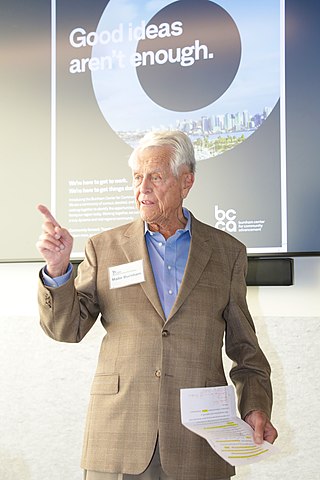
Malin Burnham is an American sailor, real estate developer and philanthropist from San Diego, California.
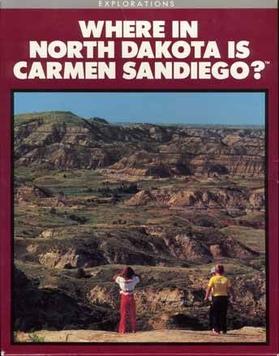
Where in North Dakota Is Carmen Sandiego? is a 1989 edutainment video game. It is the fourth game in the Carmen Sandiego video game series after World (1985), U.S.A. (1986), and Europe (1988). Having observed the popularity of the Carmen Sandiego franchise in the education of school children, educators were inspired to develop a North Dakota version to teach North Dakotans about their state's history and geography.
Carmen Sandiego Days have been popular across United States schools since they were first held in 1988. Inspired by the Carmen Sandiego franchise, these days see schools hold week-long Carmen Sandiego-themed events, aided by packs and prizes originally provided by Broderbund, and later by the franchises' subsequent owners after The Learning Company's acquisition of Broderbund in 1998. The 30th Carmen Sandiego Day took place on January 8, 2018.

Carmen Sandiego in Japan – Hannin Sagashite Nihon Zenkok is a 1989 spin-off entry in the Carmen Sandiego franchise. It was developed and published by Broderbund Japan on two floppy disks for the NEC PC-9801 Series 525in. The title functions as both an adventure game where players chase and capture Carmen, and an educational game where players learn about geography and history of Japan. The title was released on November 21, 1989, one of the few titles released under the Broderbund Japan brand that year alongside tabletop Shufflepuck Café and shooter Wings of Fury (September).















